Late Summer 2023 Snapshots From Extension’s Pollinator Paradise Garden
go.ncsu.edu/readext?959024
en Español / em Português
El inglés es el idioma de control de esta página. En la medida en que haya algún conflicto entre la traducción al inglés y la traducción, el inglés prevalece.
Al hacer clic en el enlace de traducción se activa un servicio de traducción gratuito para convertir la página al español. Al igual que con cualquier traducción por Internet, la conversión no es sensible al contexto y puede que no traduzca el texto en su significado original. NC State Extension no garantiza la exactitud del texto traducido. Por favor, tenga en cuenta que algunas aplicaciones y/o servicios pueden no funcionar como se espera cuando se traducen.
Português
Inglês é o idioma de controle desta página. Na medida que haja algum conflito entre o texto original em Inglês e a tradução, o Inglês prevalece.
Ao clicar no link de tradução, um serviço gratuito de tradução será ativado para converter a página para o Português. Como em qualquer tradução pela internet, a conversão não é sensivel ao contexto e pode não ocorrer a tradução para o significado orginal. O serviço de Extensão da Carolina do Norte (NC State Extension) não garante a exatidão do texto traduzido. Por favor, observe que algumas funções ou serviços podem não funcionar como esperado após a tradução.
English
English is the controlling language of this page. To the extent there is any conflict between the English text and the translation, English controls.
Clicking on the translation link activates a free translation service to convert the page to Spanish. As with any Internet translation, the conversion is not context-sensitive and may not translate the text to its original meaning. NC State Extension does not guarantee the accuracy of the translated text. Please note that some applications and/or services may not function as expected when translated.
Collapse ▲In late 2008, I planted a demonstration pollinator garden at Chatham Mills to provide forage from early spring to late fall for pollinators such as honey bees, native bees, butterflies, flower flies, hummingbirds, beetles, and other beneficial insects. The garden features over 225 unique species of perennials, 85% of which are native to North Carolina. The garden is a great teaching tool that I use to conduct workshops and tours for hundreds of folks each year. It has taught me so much and I enjoy sharing this knowledge with others. Below you can see photos of the pollinator garden from mid-July through mid-September. There was an average of 80 species in bloom each week during this two month period of late summer!
Click here for links to all the seasonal photo collections.
Register for a fall pollinator garden tour.
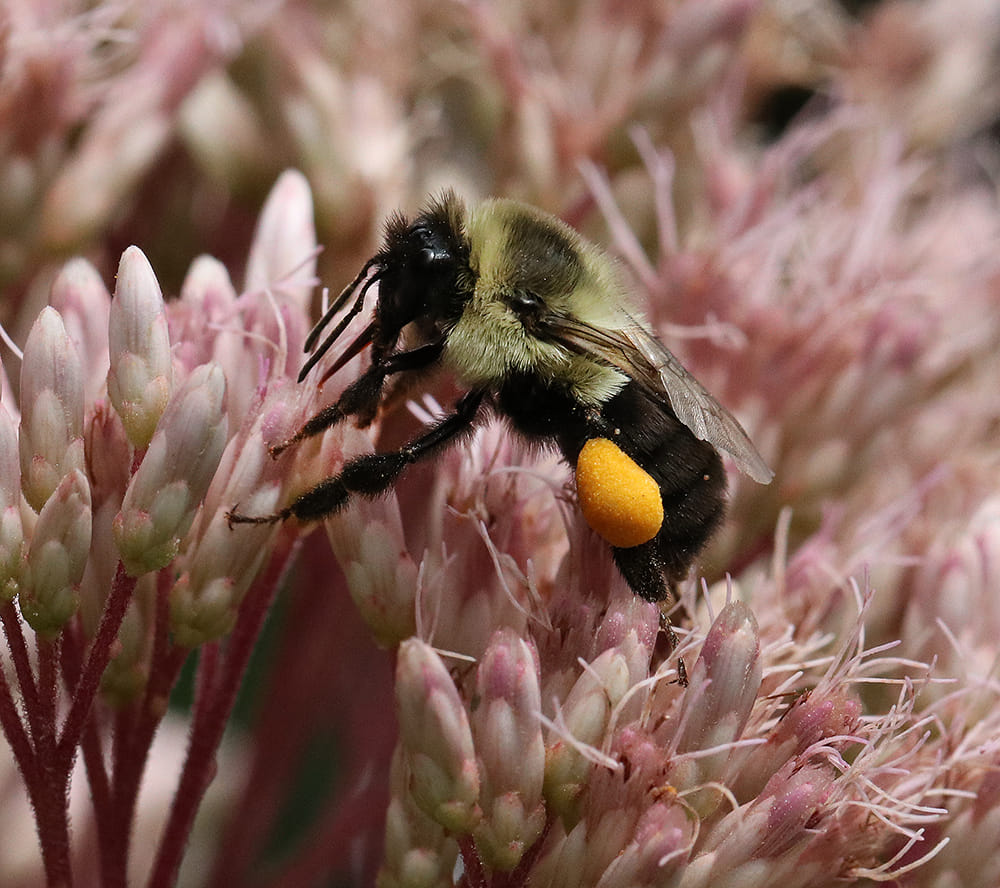
Bumble bee on joe-pye weed. Photo by Debbie Roos.
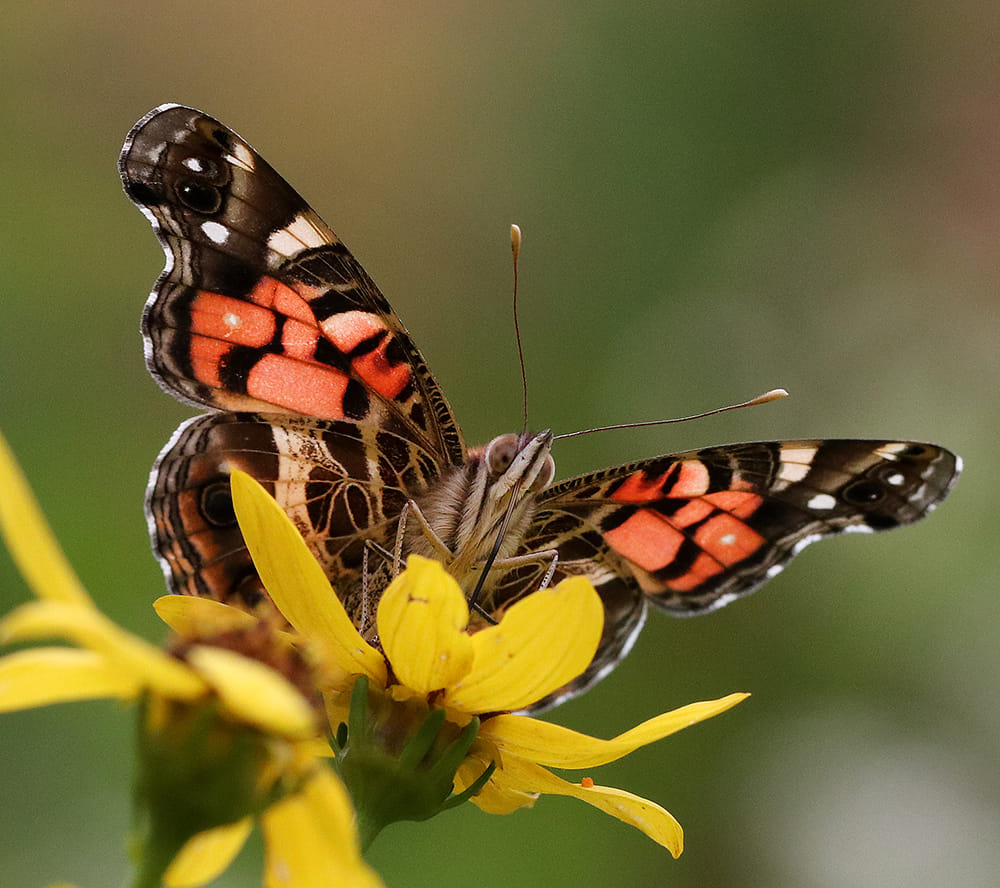
American lady butterfly on whorled tickseed. Photo by Debbie Roos.

Tiny Carolina anole perched on a passionflower leaf. Photo by Debbie Roos.
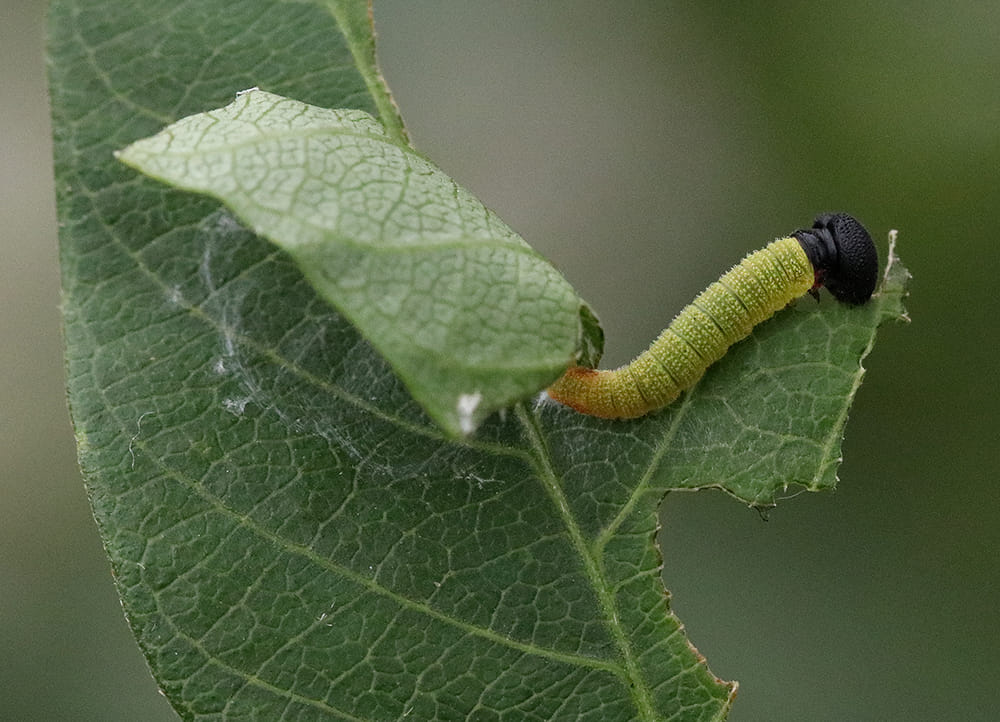
Early instar caterpillar of the silver spotted skipper on native groundnut vine. Photo by Debbie Roos.

Green-head coneflower, spurred butterfly pea, and eastern horsemint. Photo by Debbie Roos.
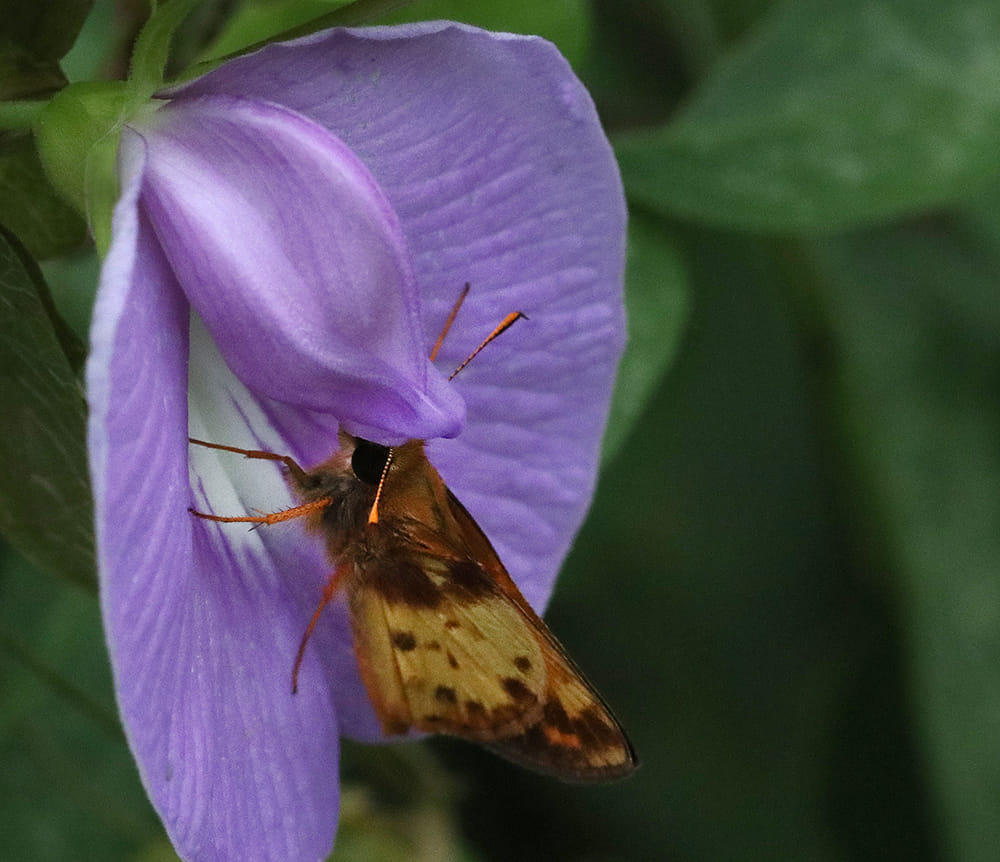
Zabulon skipper on spurred butterfly pea vine. Photo by Debbie Roos.
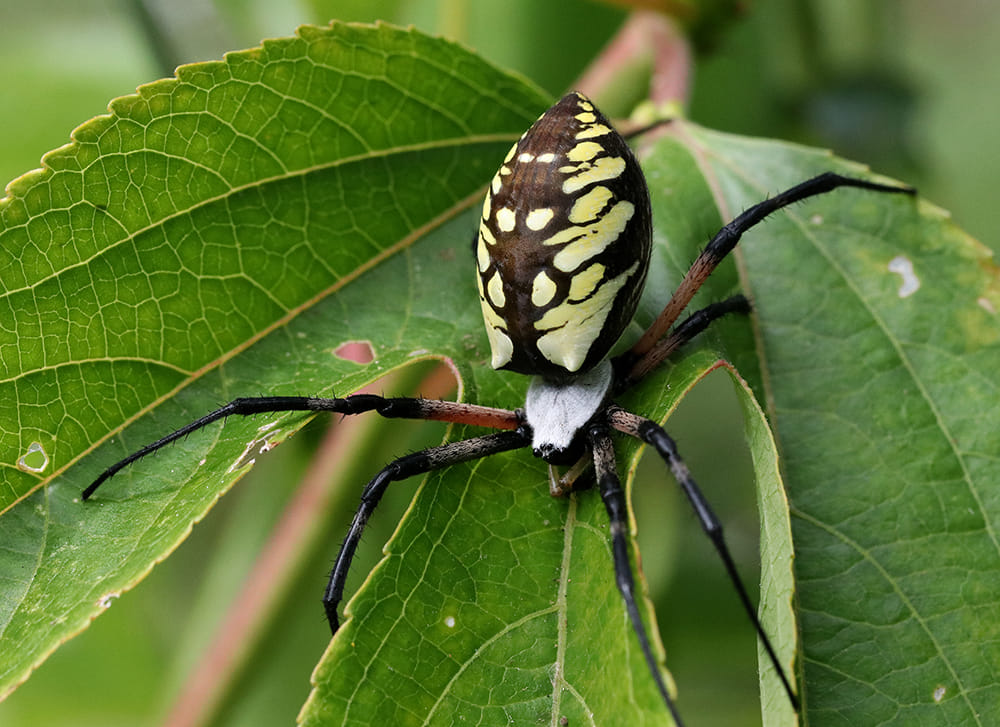
Gravid Argiope garden spider on passionflower leaf. Photo by Debbie Roos.
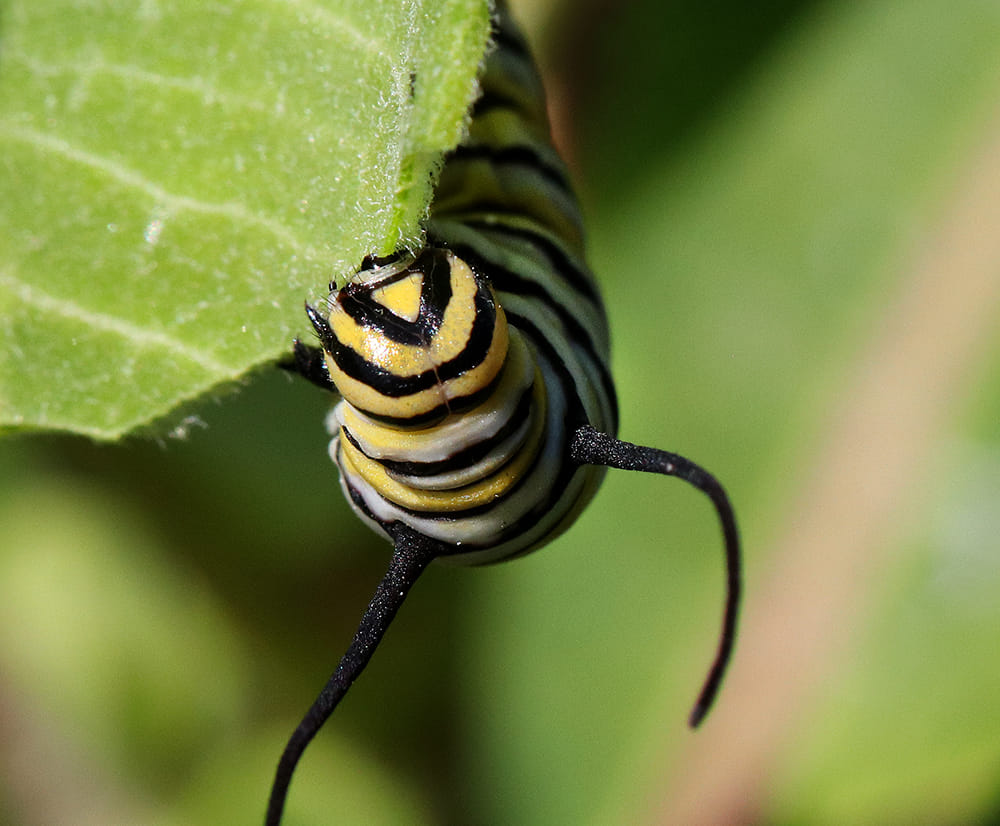
Monarch caterpillar on common milkweed. Photo by Debbie Roos.

Katydid wasp on yellow passionflower. The bloom of this native vine is smaller than a quarter but attracts many different pollinators. Photo by Debbie Roos.
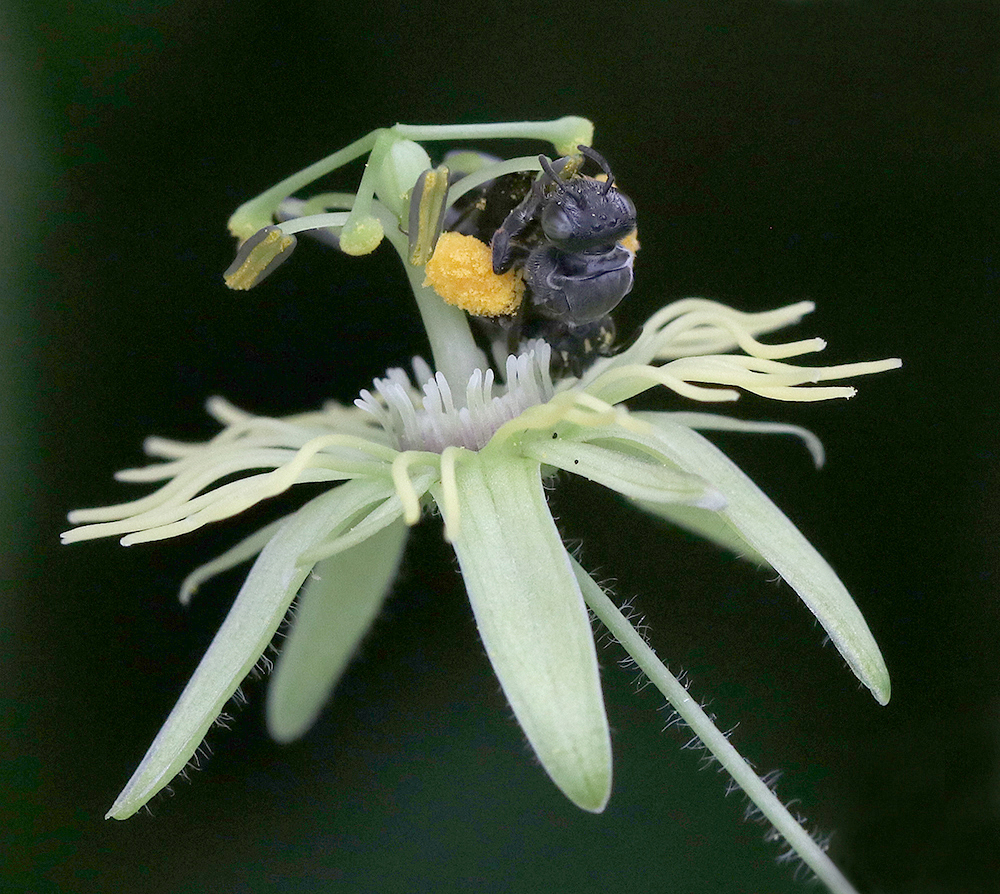
Passionflower bee collecting pollen on yellow passionflower vine. This uncommon bee is a solitary ground-nesting native bee that only collects pollen from a single plant species, in this case the yellow passionflower. For more photos and details about the passionflower bee, visit go.ncsu.edu/passion-bee. Photo by Debbie Roos.
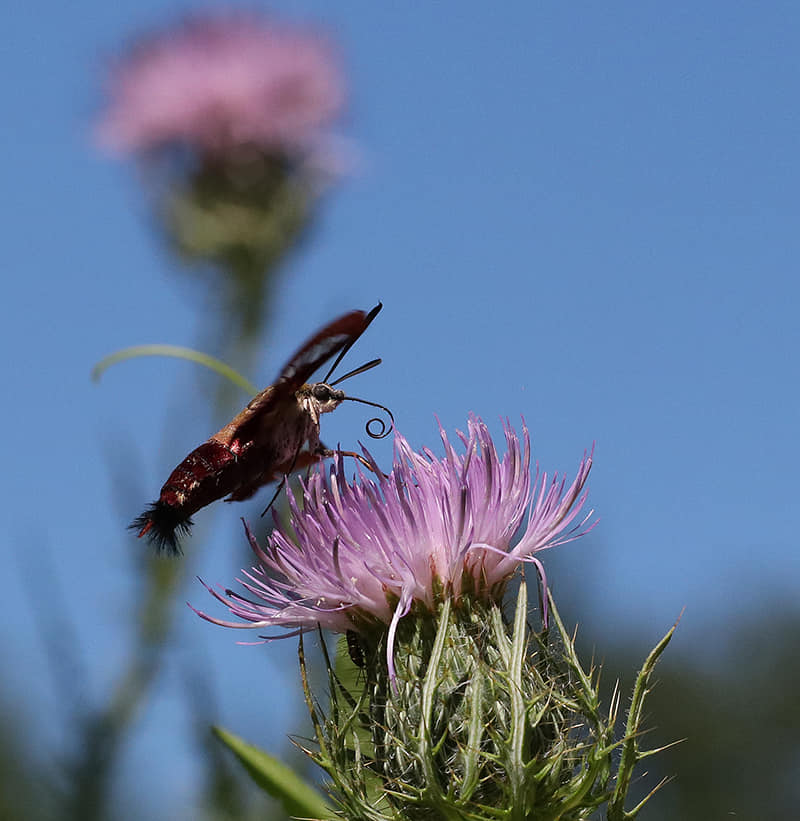
Hummingbird moth nectaring on native field thistle. Thistle is a pollinator powerhouse! Photo by Debbie Roos.

Eastern tiger swallowtail with monarch nectaring on native field thistle. Photo by Debbie Roos.
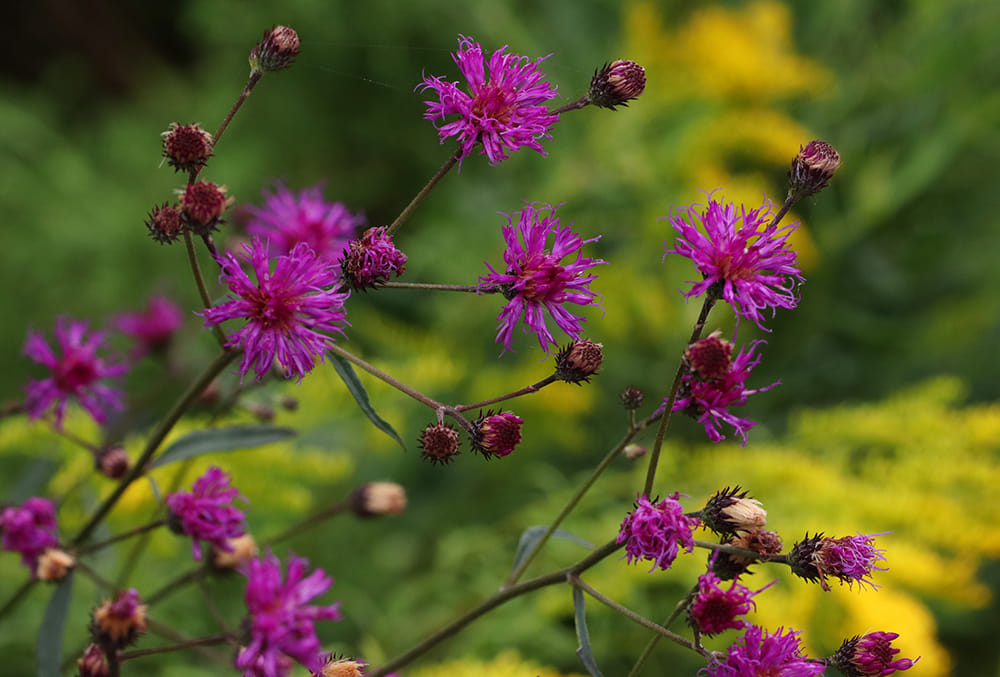
Stemless ironweed with small’s goldenrod. Photo by Debbie Roos.

Honey bee collecting pure white pollen of ironweed. Photo by Debbie Roos.
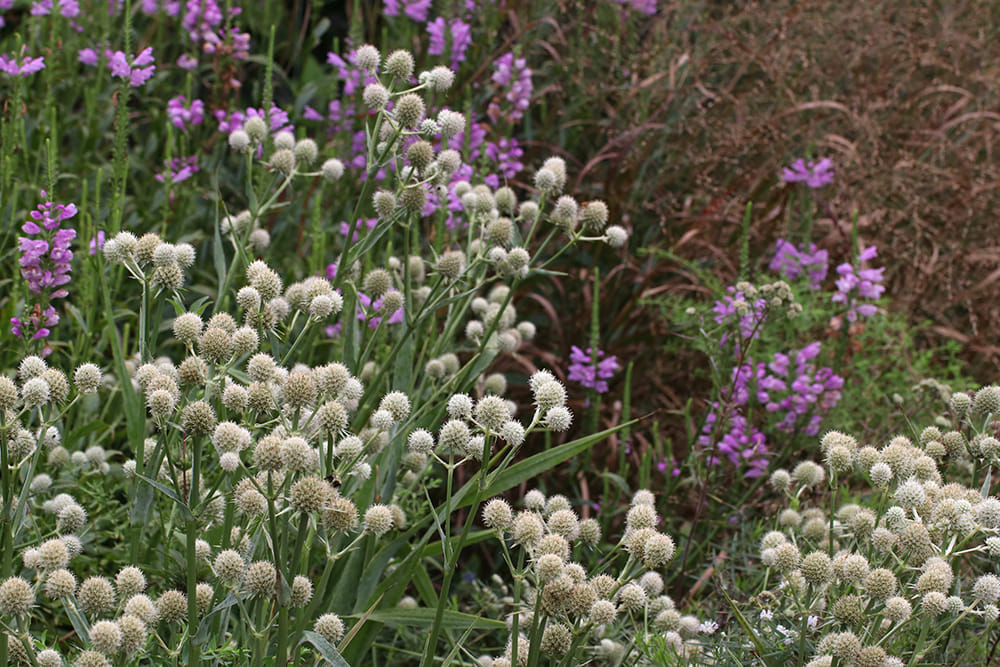
Rattlesnake master with obedient plant and switchgrass. Photo by Debbie Roos.
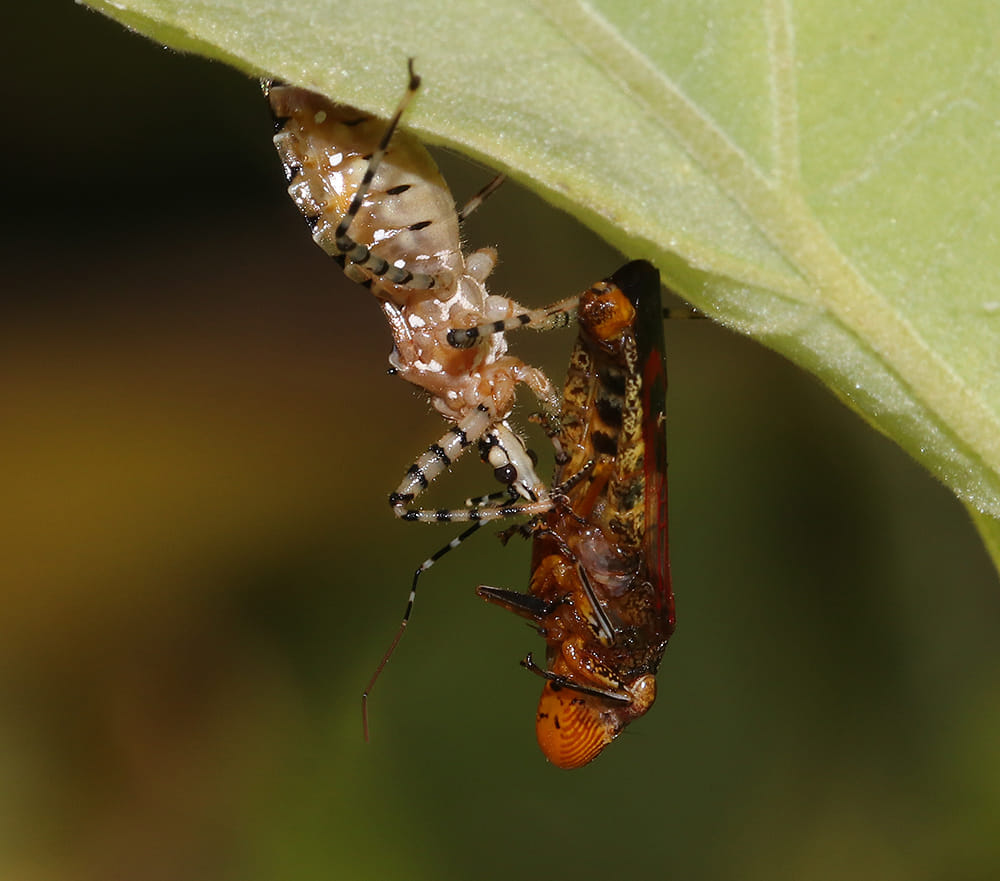
Assassin bug feeding on leafhopper on velvet mallow. Photo by Debbie Roos.
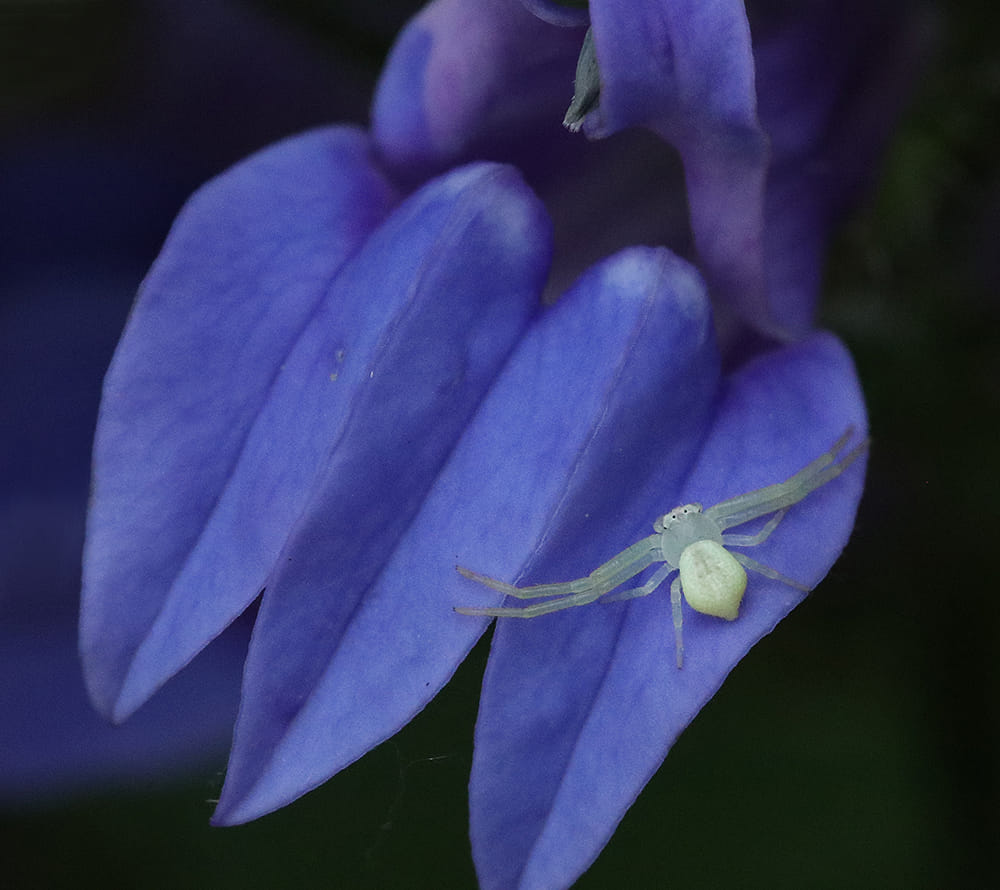
Crab spider on great blue lobelia. Photo by Debbie Roos.
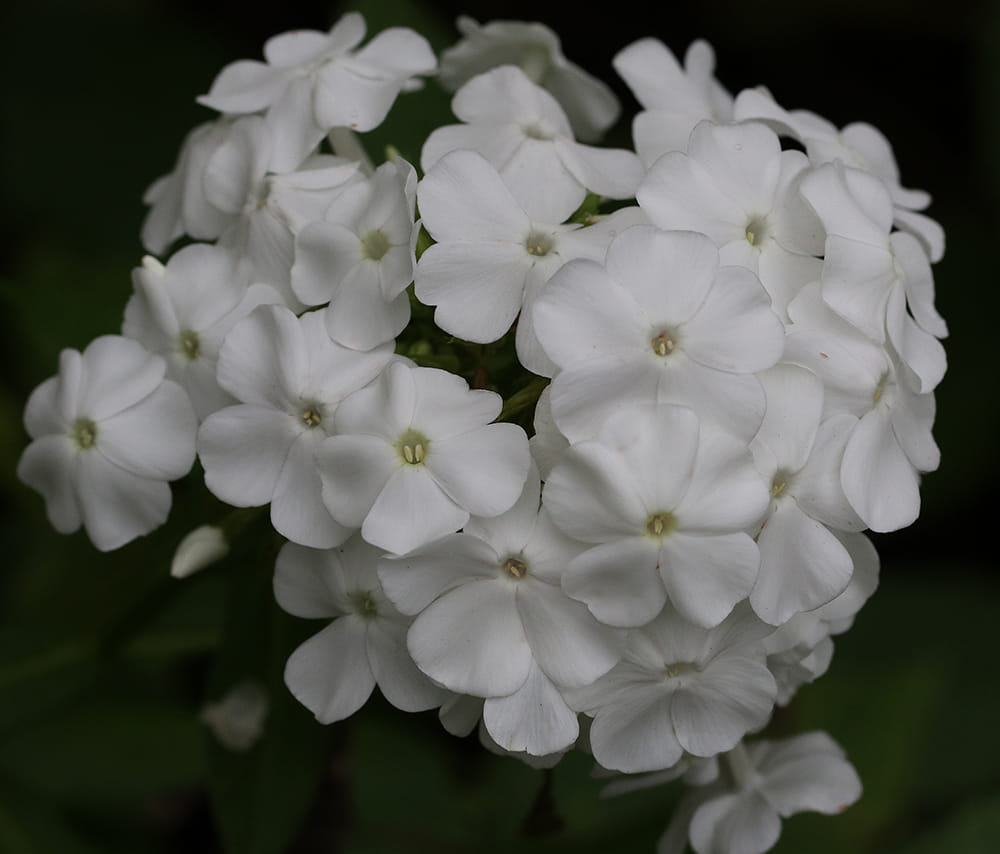
‘David’ garden phlox. Photo by Debbie Roos.
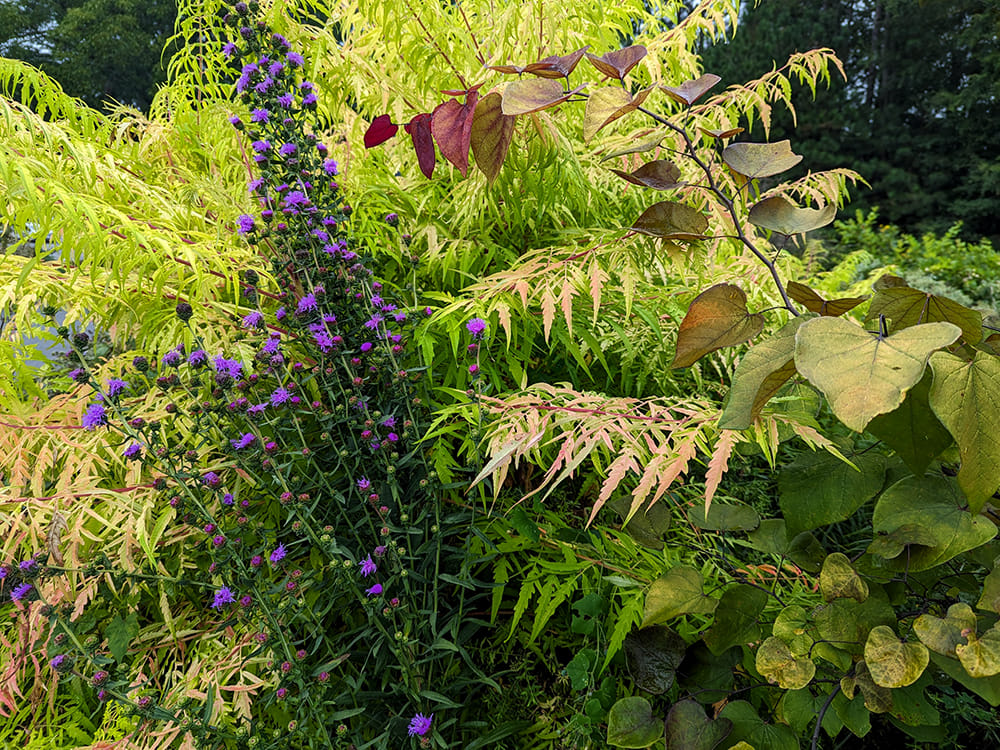
‘Tiger Eyes’ staghorn sumac, ‘Flamethrower’ redbud, and blazing star. Photo by Debbie Roos.
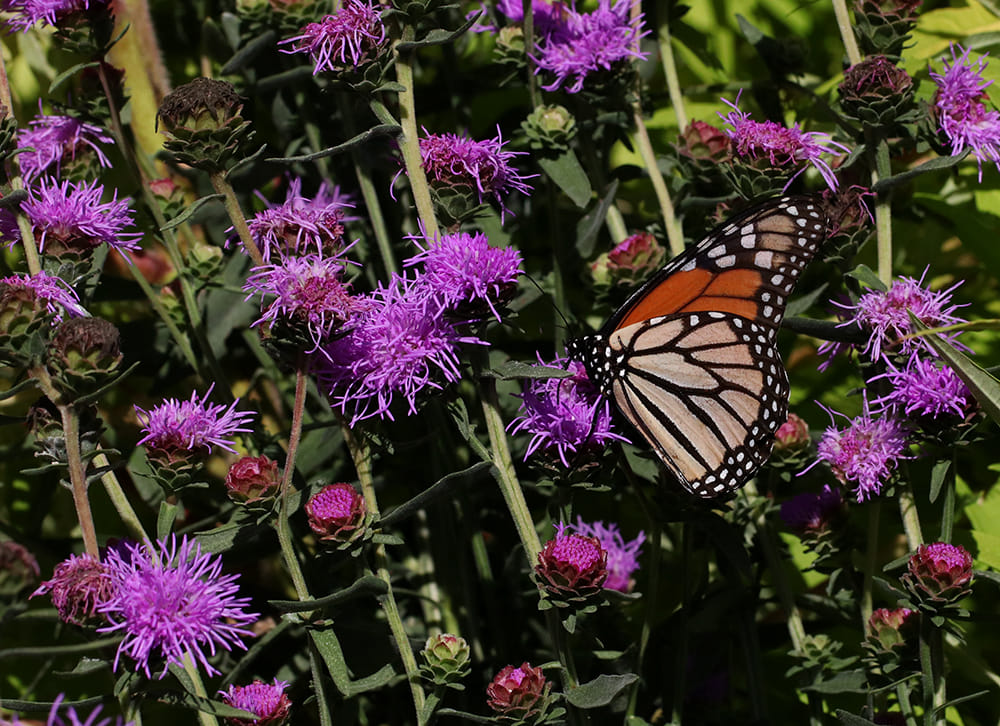
Monarch on blazing star. Photo by Debbie Roos.

Freshly molted monarch caterpillar with its shed exoskeleton behind it. A caterpillar molts five times before becoming a butterfly. Photo by Debbie Roos.

Monarch chrysalis on aster. Photo by Debbie Roos.
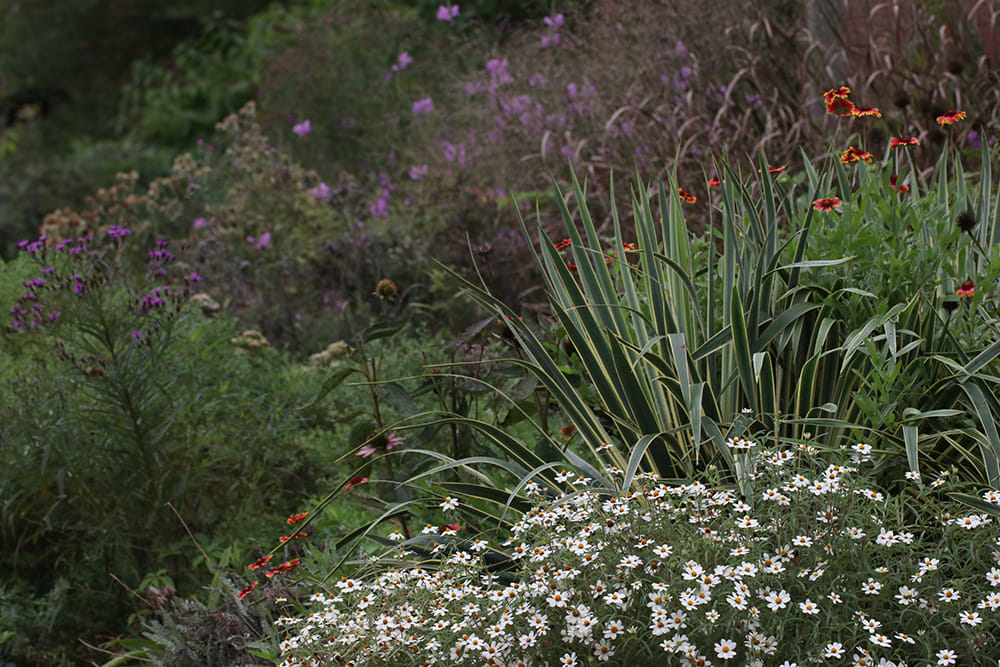
Late summer pollinator bed. Photo by Debbie Roos.
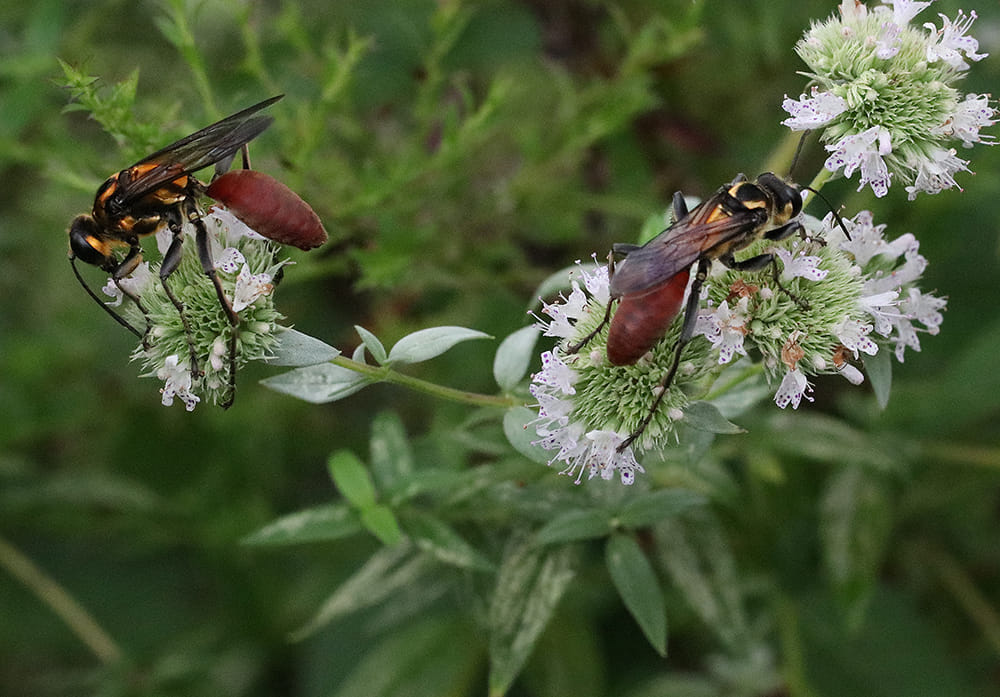
Golden-reined digger wasps on mountain mint. Photo by Debbie Roos.
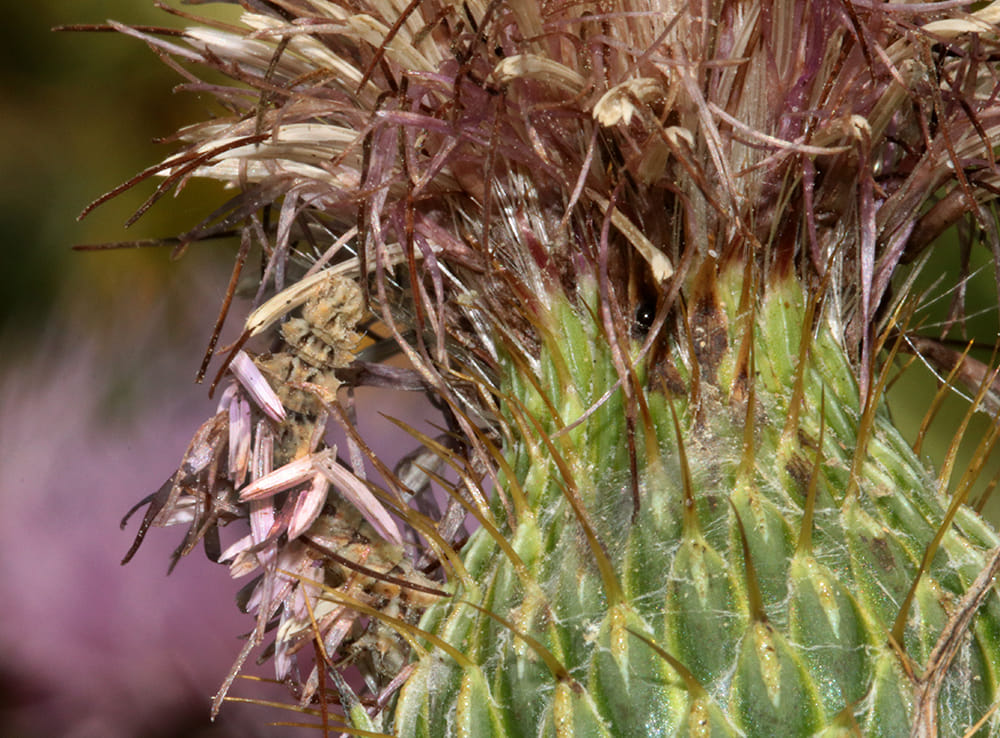
Camouflaged looper on field thistle. These tiny inchworms attach pieces of the flowers they are feeding on to their backs to blend in with the plant. For more photos and details about the camouflaged looper, visit go.ncsu.edu/camo-looper. Photo by Debbie Roos.
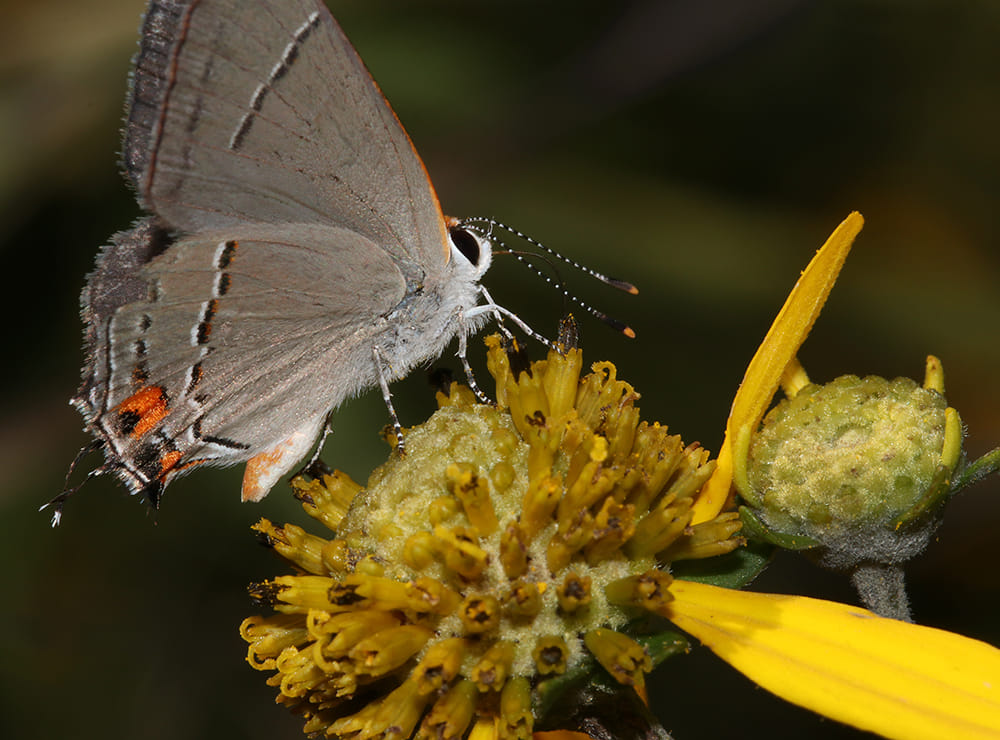
Gray hairstreak on green-head coneflower. Photo by Debbie Roos.
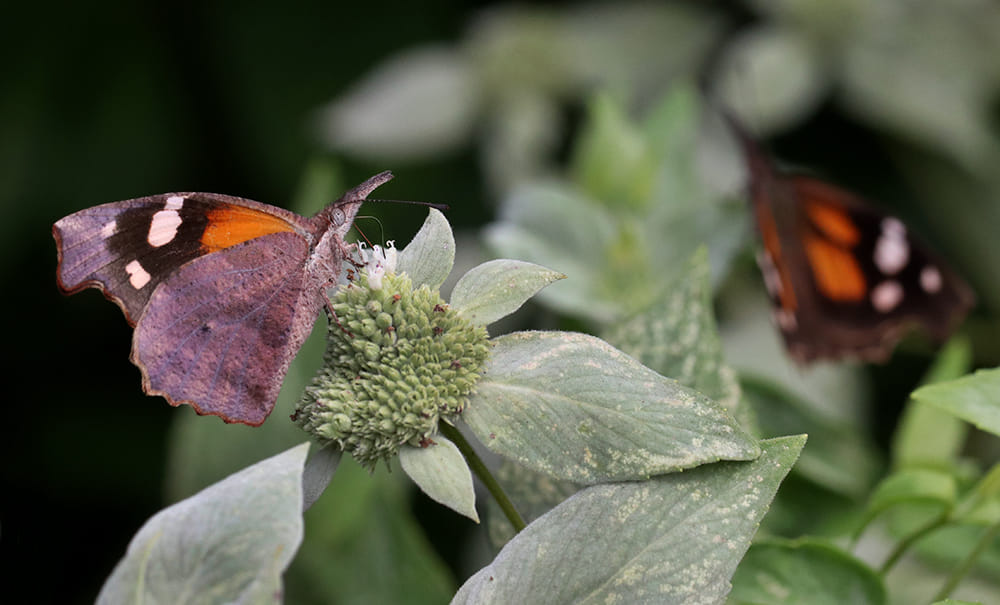
American snout butterflies on mountain mint. Photo by Debbie Roos.

Gravid green lynx spider on mountain mint. She will form an egg sac very soon! Photo by Debbie Roos.


